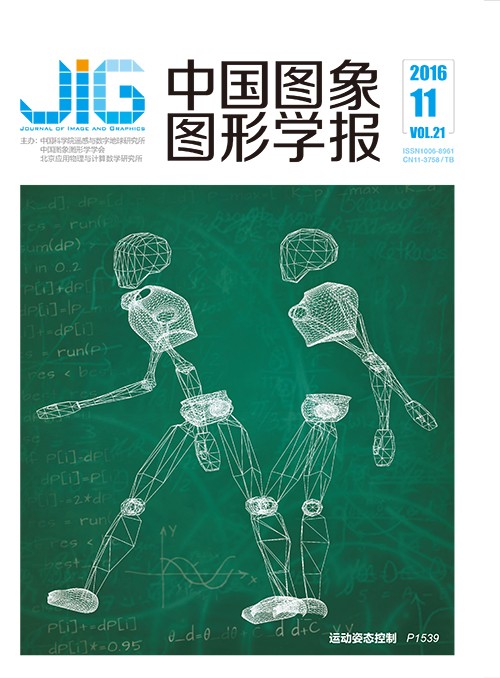
基于地表参数真实性的GF-1和SPOT-7多光谱影像质量评价
摘 要
目的 遥感影像中地表信息表达真实程度决定了影像信息提取和定量化应用水平,传统的从像素灰度和视觉特性角度的影像质量评价方法难以评价影像对地表信息表达能力,本文从地表反射率和NDVI(normalized difference vegetation index)两种地表参数真实性角度评价GF-1和SPOT-7多光谱影像质量。方法 提出了一种基于地表参数真实性的多光谱影像质量评价方法,完成GF-1和SPOT-7卫星对实验区同步成像,地面同步测量大气光学特性和典型地物样区光谱,获取同步观测数据并对多光谱影像进行辐射误差处理,计算地物样区在影像上的反射率和NDVI,通过与地面实测光谱数据比较分析了地表参数真实性,评价GF-1和SPOT-7多光谱影像质量。结果 人工靶标中GF-1影像在4个波段反射率误差均在5%内,精度优于SPOT-7;植被地物中SPOT-7影像在蓝绿红波段反射率误差在4%内,近红外波段误差在15%内,NDVI误差在16%内,反射率和NDVI精度均优于GF-1;硬地地物中GF-1影像在4个波段反射率误差在6%内,精度优于SPOT-7;评价结果表明SPOT-7多光谱影像对植被类地物光谱表达真实度更高,GF-1对硬地类地物光谱表达真实度更高。结论 提出的基于地表参数真实性的遥感影像质量评价方法,能够有效地从地物光谱信息表达精度的角度评价影像质量。
关键词
Quality evaluation of GF-1 and SPOT-7 multi-spectral image based on land surface parameter validation
Wu Zhaocong1, Yang Fan1,2, Zhang Yi1, Wu Yuan1, Yu Wenyun1(1.School of Remote Sensing and Information Engineering, Wuhan University, Wuhan 430079, China;2.South China Sea Institute of Planning and Environmental Research, SOA, Guangzhou 510310, China) Abstract
Objective The validation of surface information in remote sensing image determines the performance of information extraction and quantitative applications. However, image quality evaluation based on pixel gray and human visual system cannot evaluate the expressive capability of surface information. Therefore, this study evaluates multi-spectral image quality based on the precision of reflectance and normalized difference vegetation index(NDVI) from the perspective of land surface validation. Method A method of evaluating multi-spectral images based on the validation of land surface parameters was designed, and synchronous observation was proposed to improve the accuracy of image quality evaluation. At the same time as the remote sensing satellite imagery, the ground measurement of atmospheric optical properties and land surface spectrum were implemented. The synchronous imaging on the experimental area of GF-1 and SPOT-7 was successfully completed, and the atmospheric optical properties and land surface spectrum were synchronously measured on the ground. The radiometric error of multi-spectral images was processed with the atmospheric optical properties to eliminate the influence of atmosphere. The equivalent reflectance and NDVI of multiple surface features were calculated using the measured spectrum. Meanwhile, the reflectance and NDVI of image were calculated through multi-spectral images using window analysis. The analysis of validation of land surface parameters was based on the statistics of absolute and relative errors in reflectance and NDVI between ground measurement and image. The multi-spectral image quality was evaluated using the error of each spectral band combined with the application in information expression. Result In the artificial targets, the reflectance error in four bands of GF-1 is within 5% and is more accurate than that in those of SPOT-7. In the vegetation features, the reflectance error in the blue, green, and red bands of SPOT-7 is within 4%. In the near-infrared band, the reflectance error is within 15%, the error of NDVI is within 16%, and the reflectance and NDVI of SPOT-7 are more accurate than those of GF-1. In the ground features, the reflectance error in four bands of GF-1 is within 6% and is more accurate than that in those of SPOT-7. Therefore, SPOT-7 multi-spectral image has high spectrum validation in vegetation features, and GF-1 multi-spectral image has high spectrum validation in ground features. Conclusion Comparing the reflectance between SPOT-7 and GF-1 multi-spectral images shows that the recognition of vegetation features is stronger and the growth monitoring of vegetation features is weaker in SPOT-7 than in GF-1. The detection in type, water content, and surface roughness of hard features is more sensitive in GF-1 than in SPOT-7. Comparing the NDVI between SPOT-7 and GF-1 multi-spectral images shows that the performance in growth state, coverage density, and distribution of vegetation is more accurate in SPOT-7 than in GF-1. The proposed evaluation method for multi-spectral image considers the validation of land surface parameters, and can evaluate image quality effectively based on the precision in spectral information expression.
Keywords
image quality evaluation synchronous observation radiometric correction reflectivity normalized difference vegetation index (NDVI)
|



 中国图象图形学报 │ 京ICP备05080539号-4 │ 本系统由
中国图象图形学报 │ 京ICP备05080539号-4 │ 本系统由